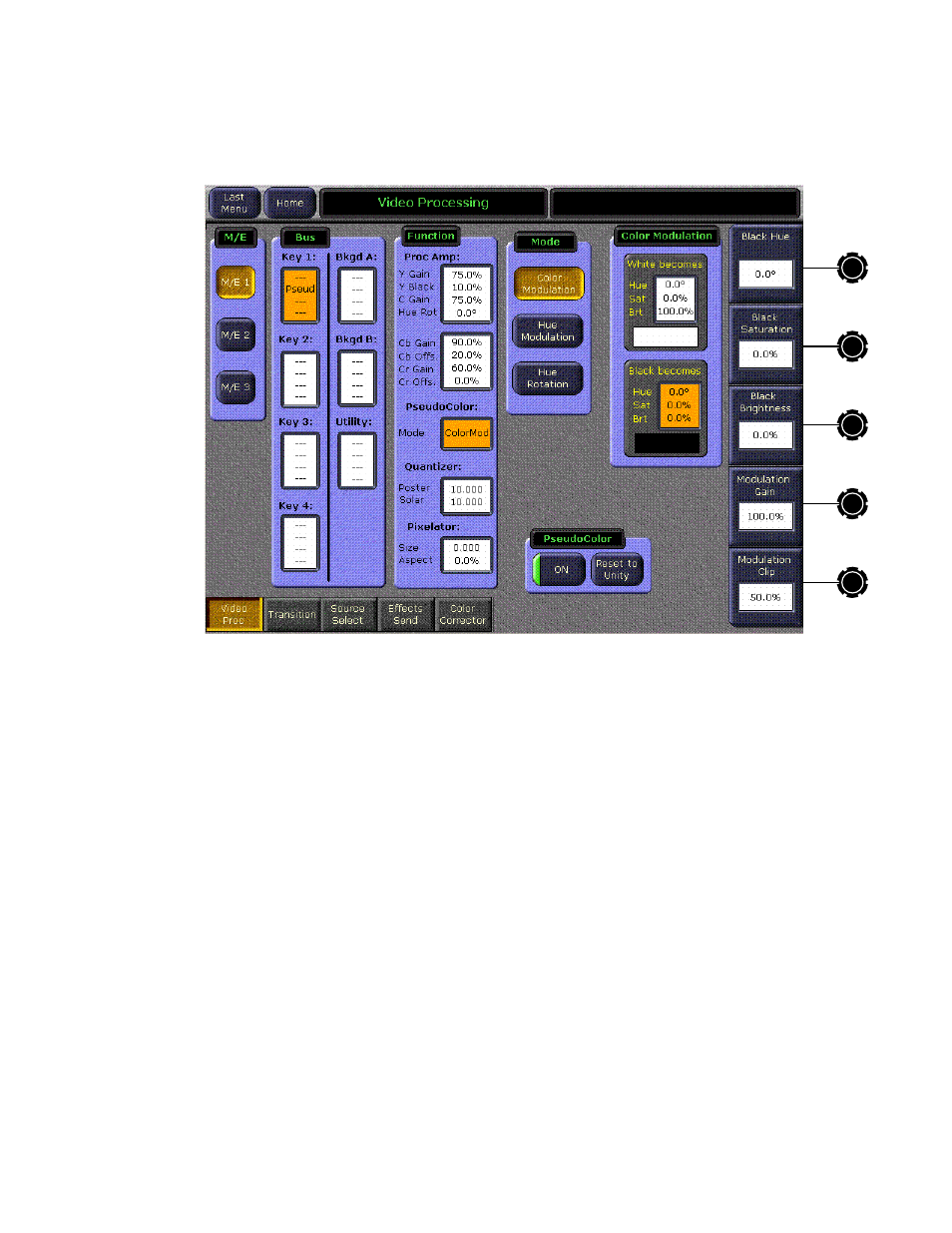Color modulation – Grass Valley Zodiak v.6.0 Mar 15 2006 User Manual
Page 321

Zodiak — User Manual
321
M/E Menus
Color Modulation
Figure 224. PseudoColor – Color Modulation Controls
Color Modulation uses the luminance component of the processed video
signal to mix between two color mattes. Clip (
Modulation Clip
) and gain (
Mod-
ulation Gain
) parameters can then be used to control a matte wash between
the two color mattes, which are set up similarly to the Base Matte and Wash
Matte on the matte generator menu. When the luminance of the modu-
lating video approaches white, the Color Modulator mixes the modulated
video toward the matte labelled
White becomes
. When the luminance
approaches black, the Color Modulator mixes toward the matte labelled
Black becomes
. A typical application is to convert color video to sepia tone.
Note
Incoming levels above clip hi and below clip low will not affect the output
color, making large areas of the screen a fixed color. These controls should
remain set to defaults unless the operator wants to restrict the range of
incoming luminance levels that affect the output.
The data boxes in the Color Modulation pane delegate the three soft knobs
at right to adjust
Hue
,
Saturation
, and
Brightness
for the selected color matte.
These values appear in the data boxes in the Color Modulation pane. In
addition, a color swatch approximates the chosen color.
The
Reset to Unity
button sets the Mattes to white and black, set s Modulation
Clip to 50%, and set Modulation Gain to 100%.
